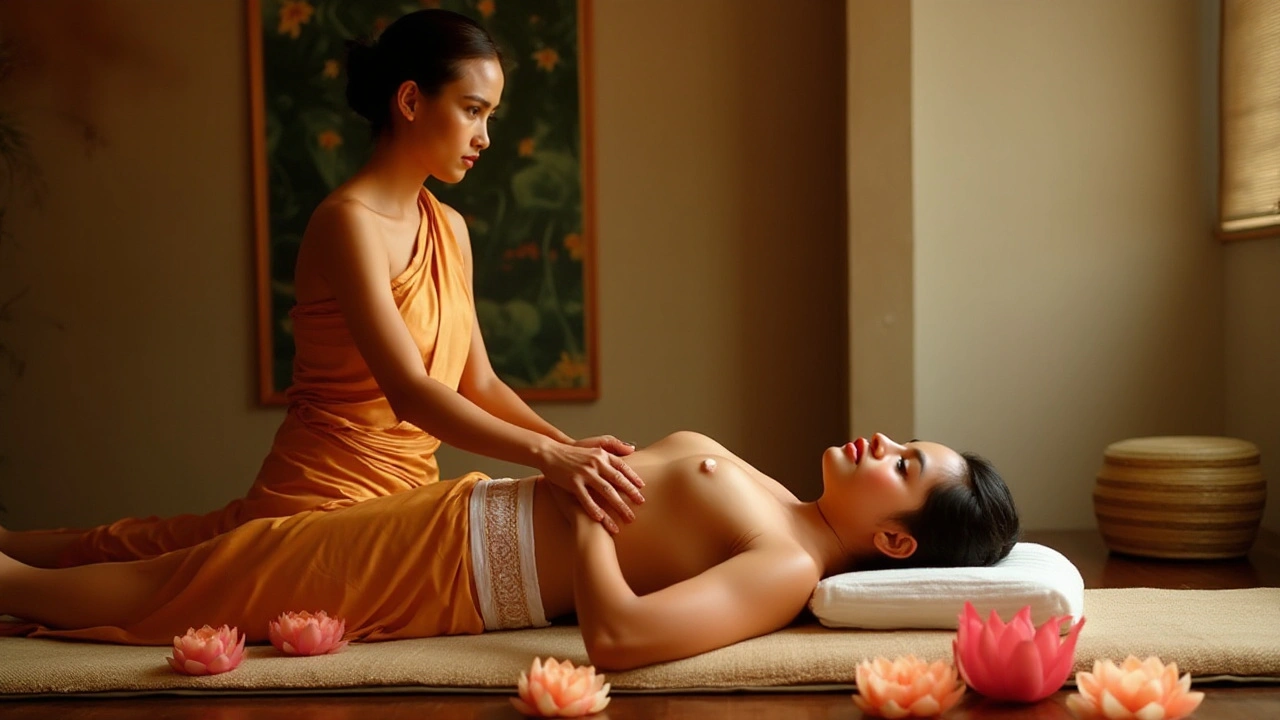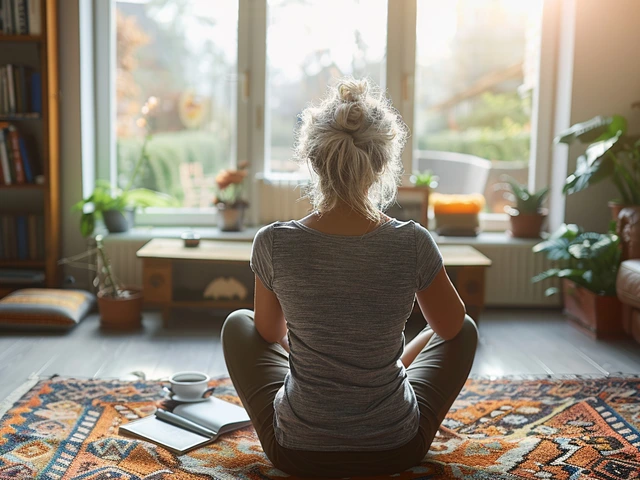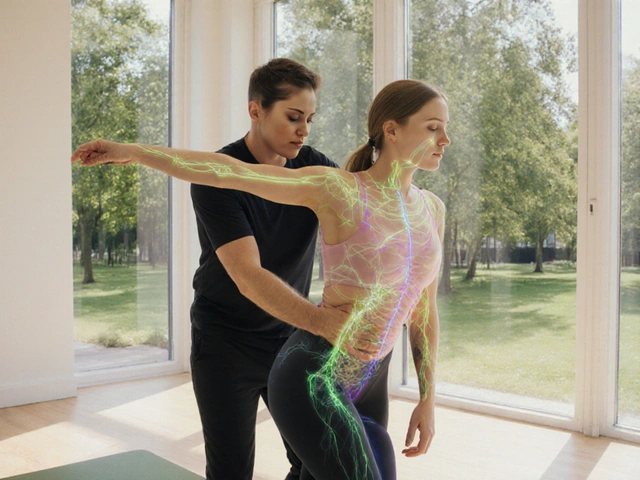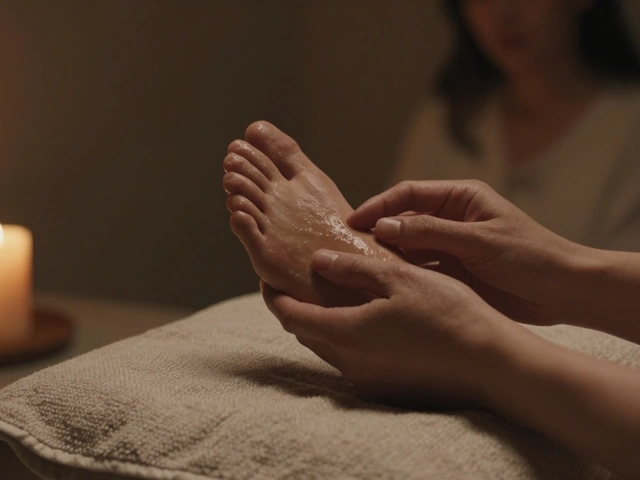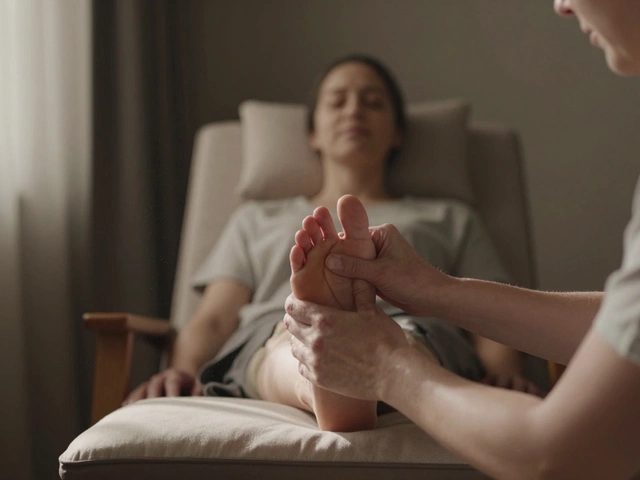In today's fast-paced world, the need for solace and rejuvenation is more crucial than ever. Thai massage, with its roots steeped in ancient traditions, stands as a beacon of peace and healing. Often described as a meditative dance between giver and receiver, this therapy promises not only physical relaxation but also a heightened sense of inner serenity.
This age-old practice taps into a blend of acupressure, yoga-like stretches, and reflexology, aiming to harmonize body and mind. Whether it’s easing muscle tension or soothing a restless spirit, Thai massage invites individuals on a journey towards holistic well-being. As we explore this gentle yet powerful practice, discover how it can carve a path to inner peace amidst the chaos of everyday life.
- Origins and Philosophy
- Techniques and Benefits
- Experiencing a Session
- Selecting a Professional
- Incorporating Massage into Routine
Origins and Philosophy
Thai massage, a cherished practice in the realm of traditional healing, originates from a unique amalgamation of ancient techniques and cultural beliefs prevalent in Southeast Asia. Its roots can be traced back more than 2,500 years to the era of Jivaka Kumar Bhaccha, a figure revered as the 'Father Doctor' of Thai herbal medicine. Often thought of as being influenced by traditional Indian, Chinese, and Southeast Asian practices, Thai massage embodies a holistic philosophy that moves beyond mere physical therapy. At its core, it is rooted in the concepts of energy lines, known in Thai as 'Sen,' which align closely with acupressure points and serve as pathways for the body’s energy, or 'lom,' to flow harmoniously.
Unlike other forms of massage that focus primarily on muscles, Thai massage targets the intricate web of energy lines, fostering a balance in both the body and spirit. This ancient practice integrates relaxation, meditation, and spiritual wellness, making it both art and science. The principles underlying its application aim to merge physical stretching with energetic healing, often drawing on Buddhist teachings involving mindfulness and metta, or loving-kindness. An interesting historical note reveals that traditional Thai massage was once solely practiced in Buddhist temples and was considered a form of meditative practice, preparing both the practitioner and recipient for elevated consciousness.
The techniques employed have been passed through generations, often by word of mouth, which has preserved an authenticity in its physical and philosophical approach. Though diverse interpretations of its practice exist depending on the region, the constant remains its deep connection to nature's rhythms and an individual's intrinsic energy. As Vithaya Herabundit, a renowned Thai massage therapist, once opined,
"True healing of the body will balance the mind and is only achievable when the soul is nurtured."This deeply contemplative aspect of Thai massage is testament to its enduring relevance, providing spiritual solace even as it promotes physical health.
Modern iterations continue to revere these timeless wisdoms, often incorporating them into spa settings around the globe. Yet the foundational beliefs of balancing the mind, body, and spirit endure, revered by those who have experienced its profound benefits. For those seeking to unlock the full potential of earthly peace, Thai massage offers an invitation to explore a sensory journey like no other.
Techniques and Benefits
Delving into the world of Thai massage unveils a plethora of techniques, each with its unique set of benefits, crafted meticulously over centuries. At the heart of this practice lies the ancient art of combining acupressure, assisted yoga, and deep stretching. Practitioners use their palms, elbows, knees, and feet to initiate rhythmic pressure along energy lines, known as 'Sen' lines, which are believed to align with the body's energy flow. The intensity and precision of these movements not only release deep-seated tension but often result in an increased range of motion, which some might describe as feeling rejuvenated and remarkably supple at the end of a session.
One cannot overlook the profound relaxation that accompanies the physical elements of a Thai massage. While the body undergoes a process akin to passive yoga, the mind is simultaneously engaged in a reprieve from daily stressors. This dual stimulation has made Thai massage particularly popular for those battling stress and anxiety. It's not uncommon for recipients to experience a meditative state during the massage, with practitioners often integrating mindful breathing exercises to enhance this tranquil journey. As a notable practitioner once said,
"The beauty of Thai massage lies in its ability to heal the body while calming the mind."This intertwined healing process can help foster an inner peace that extends beyond the session into one's daily life.
Specific Techniques and Their Benefits
Exploring the specific techniques practiced during a session further highlights the extensive tradition embedded within Thai massage. A technique called 'palming,' where broad surface pressure is applied using the hands, serves to warm the muscles and enhance circulation. 'Thumbing,' a more focused pressure using the thumbs along specific points, aims to release blockages and restore the flow of energy. Another method, 'stretching,' sees the recipient's limbs maneuvered into yoga-like positions, improving flexibility and joint mobility. The beauty of these techniques lies in their adaptability; practitioners often tailor sessions based on individual needs, ensuring each experience is as unique as the person receiving it.
The benefits extend far beyond mere physical relief. Among the well-documented health perks, many individuals find their sessions lead to better sleep, higher energy levels, and improved posture. A robust study demonstrated that regular Thai massage significantly reduces levels of cortisol, a stress hormone, suggesting a valuable role in stress management. For those looking to address physical ailments alongside emotional well-being, Thai massage stands out as a holistic option that nurtures both. For those who appreciate added data insights, here’s a simplification:
| Technique | Benefit |
|---|---|
| Palming | Enhanced muscle relaxation and circulation |
| Thumbing | Alleviates knots and restores energy flow |
| Stretching | Increases flexibility and joint mobility |
The investment in such a tactile and mindful practice extends its rewards long after the session concludes. For many, the tangible outcome is not just a relaxed body, but an uplifted spirit, ready to tackle the stresses of life with newfound resilience. It is a testament to Thai massage's enduring legacy and its capacity to provide both immediate relief and long-term benefits for both mind and body.

Experiencing a Session
Embarking on the journey of a traditional Thai massage session is akin to stepping into a sanctuary of tranquility. The experience is designed to immerse you in a world where time slows, and every movement is deliberate. The session typically begins with a warm welcome from the practitioner who may invite you to discuss any specific areas of tension or personal goals for the massage. This personalized approach ensures that every session caters to individual needs, making it a bespoke experience that intertwines physical relief with mental clarity.
Before the massage begins, you will often be offered a loose, comfortable outfit to change into, as Thai massage is traditionally performed fully clothed. The setting is calm, often enhanced by soft lighting and soothing aromas that cultivate a holistic healing environment. As you lie down on a firm mat, instead of a table, the practitioner begins with gentle rocking motions, gradually transitioning into rhythmic compressions using palms, elbows, knees, and feet. This ancient practice works along the body's energy lines, known as 'Sen' in Thai, aiming to release blockages and restore the natural flow of energy.
With deliberate care, the therapist guides your body through a series of positions resembling yoga stretches. This passive stretching increases flexibility and induces a profound sense of relaxation. It's a dynamic interaction that resembles a graceful dance, where your body becomes an instrument being finely tuned. An intriguing aspect of Thai massage is its focus not merely on the physical body but on a binding connection between mind, body, and spirit. A participant once shared, "It's like a meditation session woven seamlessly with a massage – leaving you not only relaxed but rejuvenated on a deeper level."
A well-documented study from the International Journal of Therapeutic Massage and Bodywork highlights how regular sessions can significantly lower stress hormones while increasing overall energy and mood.
The session is not just about the professional's techniques but also your engagement. Breathing plays a vital role; practitioners often encourage deep breathing to enhance the therapeutic effects of the massage. This interaction forms a partnership, creating a serene symphony of energy exchange. For many, an hour or ninety minutes passes like a gentle breeze, and as you rise from the mat, you feel an invigorating lightness interwoven with inner peace. Whether you emerge feeling as if you've been transported to an oasis, or simply more attuned to your body and soul, the experience is both grounding and liberating. A Thai massage session, infused with centuries of wisdom, remains unparalleled in delivering harmony and wellness.
Selecting a Professional
Choosing the right practitioner for a Thai massage is vital to ensure a safe and effective experience. This ancient technique relies heavily on the skill and intuition of the therapist, making their expertise a cornerstone of the session’s success. Begin with seeking recommendations from friends or family who have experienced similar therapies. Personal references often provide insight into the therapist's style and approach, which can be more revealing than online reviews. If personal connections are sparse, consider consulting reputable wellness forums or community boards for referrals. Keep in mind, a good professional often carries a legacy of satisfied clients who can vouch for their proficiency.
Another important consideration is the practitioner's credentials and training. Authentic Thai massage therapists undergo rigorous training and typically have certifications from accredited institutions, often in Thailand. Verify such qualifications by requesting to see credentials or checking their profiles online. A genuine practitioner will not hesitate to share their experience and expertise, and many will proudly display diplomas or certificates in their practice area. Don't be shy to ask about their specialized training or workshops they have attended — this not only showcases their commitment to the craft but also ensures they are up-to-date with the latest advancements in holistic therapies.
The International Massage Association states, "A well-trained Thai massage therapist should possess knowledge of the body's energy channels and understand how to manipulate these points effectively for optimal relief and balance."
During the initial consultation, pay attention to how the practitioner communicates and assesses your needs. A seasoned therapist will conduct a thorough assessment, asking about any health issues, pain points, and lifestyle habits that might affect the treatment. They should offer a clear explanation of how Thai massage works and what you can expect from the session. This interaction also helps in establishing a rapport and understanding, which is crucial for a comfortable and trustful therapeutic experience.
Finally, consider aspects of their practice environment. The setting should be clean, tranquil, and conducive to relaxation, with appropriate measures in place for hygiene and comfort. The ambiance can significantly influence your session, making it worth noting. Discuss any preferences or concerns you might have regarding the session, such as pressure intensity or comfort levels, ahead of time. A dedicated therapist will tailor the session to align with your specific needs, ensuring a holistic and personalized approach to healing.
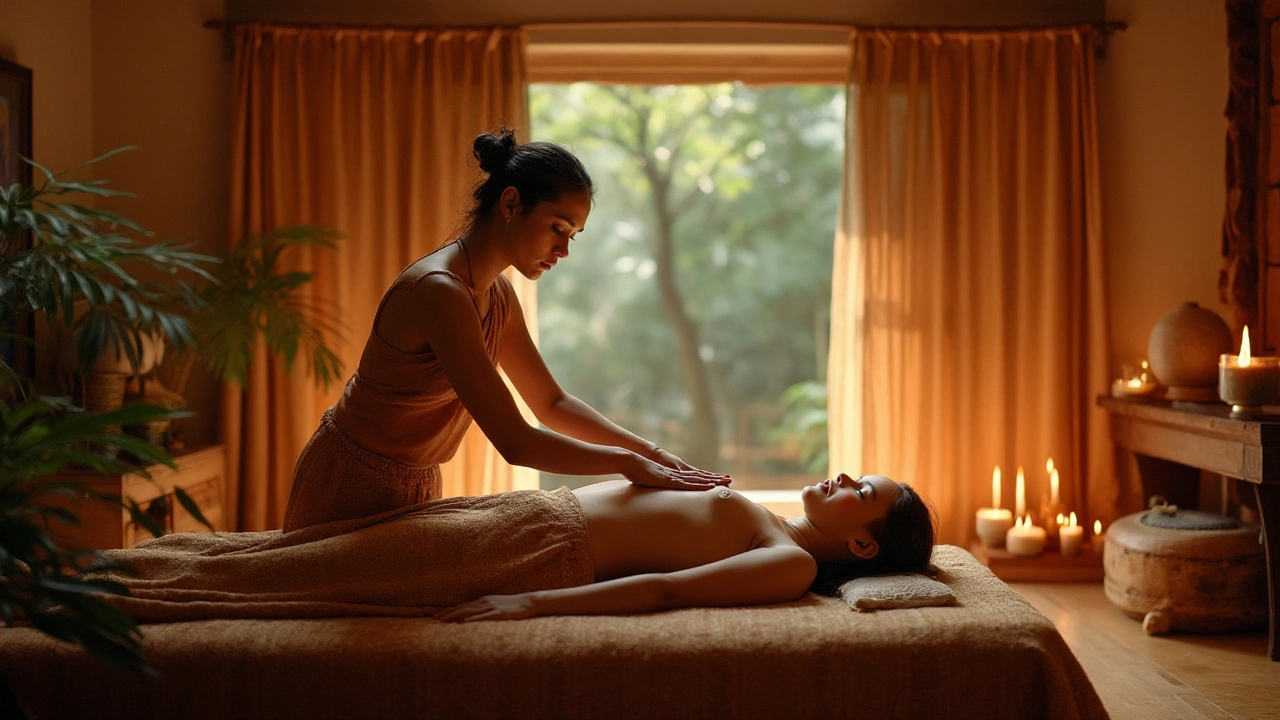
Incorporating Massage into Routine
Incorporating the ancient art of Thai massage into your everyday life can serve as a profound pillar for achieving inner peace and balance. It doesn't merely have to be a luxury reserved for occasional spa days but can become a regular appointment with tranquility. Many people find that weaving these healing sessions into their week transforms stress and tension into manageable threads that are easy to unravel. One effective method to do this is by creating a personal schedule that aligns Thai massage sessions with work commitments, social activities, and personal relaxation time, ensuring that self-care seamlessly blends with one’s lifestyle.
To effectively incorporate Thai massage into your routine, start by recognizing your body's unique requirements. Some individuals may benefit from weekly sessions, especially if they deal with chronic stress or have a job that demands intense physical activity. Others might find a bi-weekly or monthly session sufficient to refresh their spirits and ease muscular tension. The focus should be on understanding how your body responds to the treatment and adjusting frequency accordingly. As you settle into a routine, you'll notice an improvement in your energy flow, flexibility, and mental well-being, often describing the post-massage glow as a 'natural reset button'.
To ensure this integration is both effective and enjoyable, consider a few practical tips. Start by setting clear intentions for each session, such as focusing on different energy lines in the body or addressing specific physical issues. Engage in pre-session activities that enhance the massage experience, such as gentle stretching or meditative breathing exercises. Many practitioners advocate for adding a mindful intention before and after every session, which can significantly enhance the therapeutic benefits.
A reputable source once mentioned, "Your body is the battlefield for trauma – clarity begins with touch." This aligns well with the philosophy of integrating Thai massage as part of a broader wellness routine that targets both body and soul.
Furthermore, embedding Thai massage into your lifestyle invites you to explore beyond the massage table. It encourages a holistic approach to health, leading you to adopt complementary practices like yoga or tai chi, which have synergistic effects. A regular massage routine can also inspire dietary changes, promoting nourishment that supports a healthy body and calm mind. Advocating for a lifestyle that not only includes regular massages but also mindful eating, sufficient hydration, and rest, forms a comprehensive approach to maintaining peace and health. A survey highlights that individuals who committed to regular massage sessions experienced a 30% boost in daily mood and productivity, underscoring the potential benefits of making it a routine.
Ultimately, the quest to incorporate Thai massage into daily life is deeply personal. It's about making conscious choices that lead to happiness and health, creating an oasis amid life's storms. Whether you're seeking ways to unwind after a hectic week or simply looking to cherish a few moments of stillness, allowing Thai massage to be your companion is an invitation to live fully, with serenity and healing as part of your journey.

